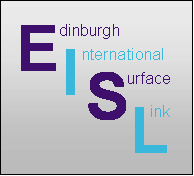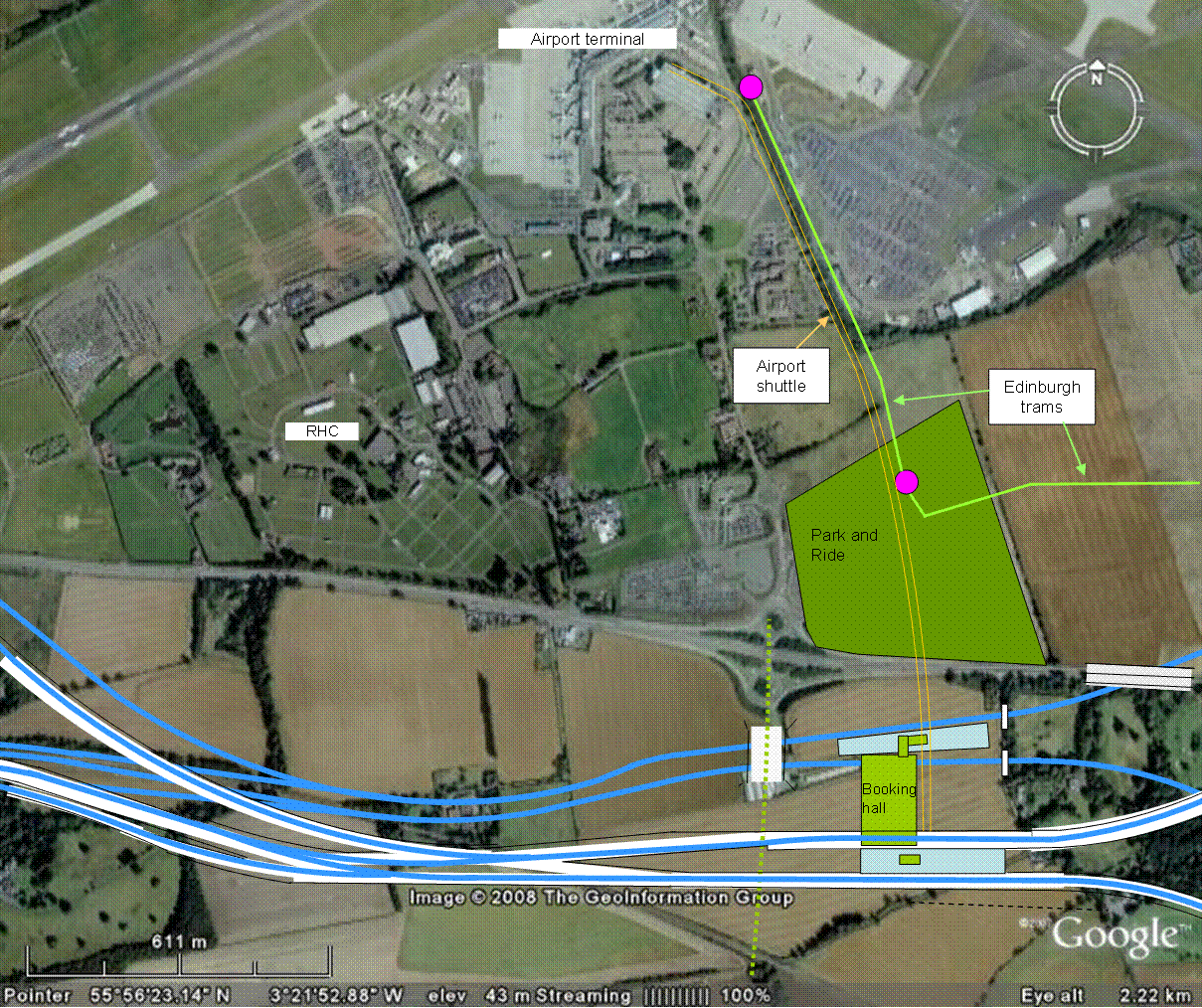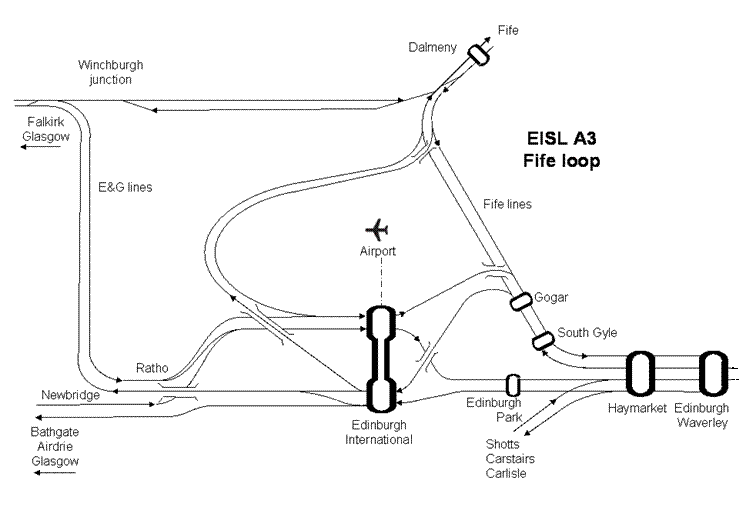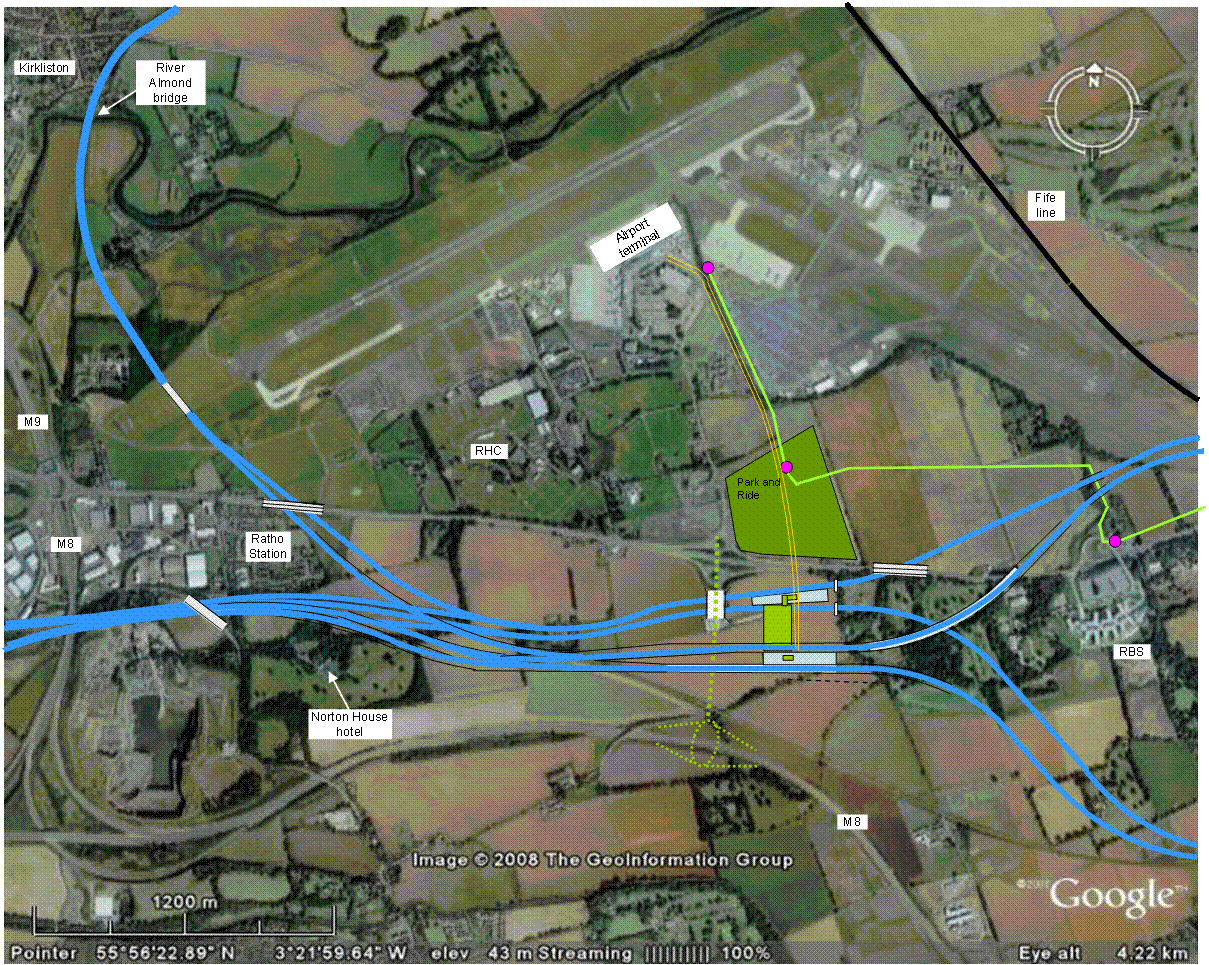 |
Edinburgh International Surface Link
Outline proposals for review and comment |
||||||||||
| Home | EARL, Gogar and trams | Development and objectives | EISL A | EISL B | Conclusions | About |
|
Why were the EISL proposals developed?The proposals set out in this document were intended to offer a transport interchange that could be built after Edinburgh Gateway station was commissioned, as a future development to accommodate growth in demand. Unlike the arrangement at Edinburgh Gateway, EISL would be simple and easy for customers to understand and use. Transit from aircraft to train will be possible without going outdoors. The single interchange will offer frequent services to all parts of Scotland. The proposed new grade-separated junction arrangements will offer greater operational flexibility and service reliability than the Almond chord, because they will remove the present flat junction at Newbridge and remove the need for changes to the flat junctions at Dalmeny and Winchburgh.The EISL proposals have been developed in order to capture many of the comments, objections and concerns that were aired about the EARL project and about the subsequent proposals for the Edinburgh Gateway station and the Almond chord. We are seeking here to present compromise proposals that could attract consensus support. It is therefore unlikely that any one commentator will find everything he or she seeks in these proposals. Commentators on the EARL proposals covered a diverse range of views, including those who challenged the assumption that demand for air travel will grow, those who considered the plans insufficiently flexible for future growth (because the station had only two platforms), those who believed the EARL plans were technically infeasible, those who claimed the EARL plans carried excessive design and construction risk, and those who challenged the business case and the financeability of the plans. The proposals for Edinburgh Gateway and the Almond chord were fundamentally different and appealed to a different group of commentators. Their principal attractions were the low cost and speed of delivery for the Edinburgh Gateway station and its presentation as a complement to the Edinburgh tram line. The EISL proposals were originally issued to stakeholders for comment in November 2007 with the station site and rail alignments that now form the EISL B proposals. Comments were received from a wide range of interests, many supportive but some critical. The dominant objection to the EISL B proposals was the curvature of the tracks, especially the sharp curve proposed for the Airdrie-Bathgate diversion at Ratho. A few commentators suggested that this alignment is impracticable and that it would add materially to journey times. The EISL proposals were therefore revised in April 2008 to reflect the comments that had been received. The original proposals were renamed EISL B and more analysis and diagrams were presented to show the rail curvatures and gradients to demonstrate the feasibility of EISL B. However, given the preference of several commentators for straighter rail alignments, the EISL A proposals were developed with an off-airport station at Norton Park that minimises the realignment of the Edinburgh & Glasgow route. The EISL proposals remain relevant, despite the opening of Edinburgh Gateway. Some subsequent construction, notably of the new hotels just south of the airport, have compromised elements of EISL B (specifically the proposed station site) but the proposals remain broadly feasible and EISL A specifically remains worthy of consideration for future developments, including any incorporation into high-speed rail lines to and through Scotland. The focus on Manchester and Birmingham Airports as critical nodes for the HS2 rail line shows the importance of major airports and the Edinburgh Airport site could be well positioned to be the principal node of the Scottish high speed rail network at a future date. |

2007 proposal - EISL B station site 
EISL B - Ingliston junction (diagrammatic - not to scale) 
EISL B alignment |
Objectives, design principles and constraintsObjectivesThe following objectives were adopted for the EISL proposals, to reflect the comments from as wide a range of commentators as possible:
Station site optionsWe advocate a major international railway station at Edinburgh Airport, named Edinburgh International. This is modelled on the successful Birmingham International railway station which serves Birmingham Airport and which also provides a transport hub for the adjacent National Exhibition Centre. Birmingham International has subsequently become a major parkway station because it is adjacent to the M42 motorway. Birmingham Airport serves fewer air passengers than Edinburgh. (2017 CAA data: BHX 12.99m; EDI 13.41m)Edinburgh International will serve Edinburgh Airport, the Royal Highland Centre (RHC) and the Ingliston Park & Ride. It offers the prospect for substantial development of international exhibition facilities and business parks. A future motorway spur from the M8 could improve road access to the airport and enable the station to become a parkway for the central belt of Scotland. The EISL proposals offer two alternative compromise sites for the Edinburgh International rail station:
Rail design constraintsTrains’ permissible speeds are limited by the curvature and gradient of the track. Appendix C explains the calculation of the speed limits applicable as a function of track curvature. The restrictions that the gradients impose will vary depending on the acceleration and braking characteristics of the rolling stock used on the line.The EISL proposals take account of the very different nature of the three affected rail lines:
Edinburgh & Glasgow line (E&G)The E&G is a marvel of 19th century rail engineering. It covers the 46 miles from Haymarket to Cowlairs with no gradient greater than 1:800. Its very gentle gradients and smooth (large radius) curves lend the line to high speed running. The natural topography is overcome by grand viaducts, such as Almond Valley and Castlecary, and tunnels, such as Winchburgh. Only at its extreme ends is the line constrained to low speeds. There is a 1:42 gradient into Queen Street. There is a magnificent description of the line by John Willox written in 1842. This is now out of copyright and available for free download.The E&G line was electrified in 2018 and is now used principally by three-car and four-car Class 385 electric multiple units from Edinburgh Waverley to Glasgow Queen Street (via Falkirk High), Dunblane and Alloa (via Stirling) and Glasgow Queen Street (via Cumbernauld). It is also used occasionally by long-distance trains, such as the daily Highland Chieftain HST from Inverness to London. Airdrie-Bathgate lineThe Airdrie-Bathgate line was reinstated and recommissioned for Glasgow – Edinburgh through services from 2010. This line was never intended as an inter-city route, as it was built piecemeal by different railway companies and was not double-tracked until 1904. The route has steep gradients and sharp curves. The feasibility study into its reopening considered the option of realigning tracks to allow 100mph running but this was found to offer minimal improvement to journey times. The route is restricted to a maximum of 85mph although even this speed required remodelling of the track either side of Armadale. The sites of both the new Caldercruix and Armadale stations had very steep gradients of 1:50 (2%) which are unacceptable for modern station design limits and therefore the reopening project included work to provide much shallower gradients for the station platforms.The Airdrie-Bathgate line is electrified and operated by Electric Multiple Units with adequate power and acceleration to handle the steep gradients and frequent stops. From its reopening in 2010, the line has provided four electric trains per hour in each direction between Glasgow Queen Street and Edinburgh Waverley. It will provide a commuter stopping service between Glasgow and Edinburgh for communities including Livingston, Bathgate, Armadale, Drumgelloch, Airdrie and Coatbridge. Fife lineThe Fife line forms part of the East Coast Main Line and is used by inter-city services between Aberdeen and London. Nonetheless, it includes some severe gradients and line curvature that constrain line speeds. Examples are the 30mph restriction for sharp curvature at Burntisland and the 1:70 gradient between Inverkeithing and North Queensferry. The Fife line is used by a wide range of rolling stock operated by ScotRail, LNER (East Coast main line from Aberdeen to London) and Cross Country (Aberdeen to Southern England).EISL linesIn developing the EISL proposals, we have endeavoured to preserve the running conditions of these three rail lines. We have, however, taken advantage of the different nature of the lines to propose much more challenging alignments for the Airdrie-Bathgate line, which will be served solely by electric commuter trains, than for the Edinburgh & Glasgow line which will continue to provide high speed inter-city services. |

Edinburgh airport 
Birmingham International station - a helpful example 
2008 proposal - EISL A station site 
EISL A rail configuration (diagrammatic - not to scale) 
EISL A alignment 
Scotrail routes (2014) |
Comments on the proposals are welcome and should be sent to: admin@eisl.org.uk